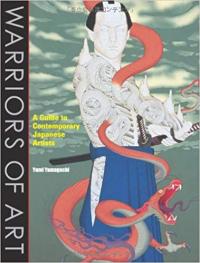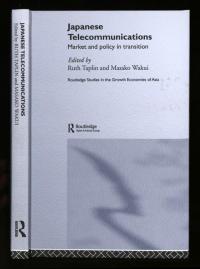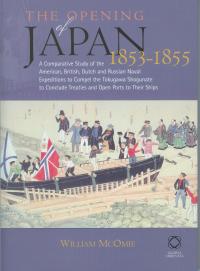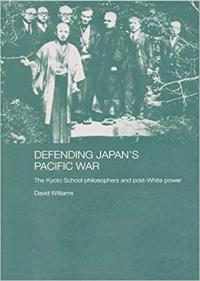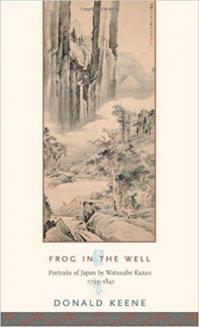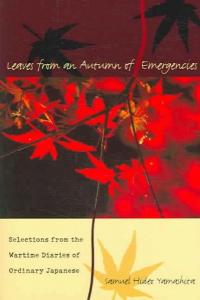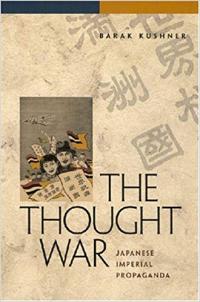The Japan Society Review
The Japan Society Review is published on a quartely basis, both online and printed (members are entitled to receive a copy by post). Since the starting of the publication in 2006, each issue covers a selection of Japan-related books and films, as well as theatre and stage productions, tv series and exhibitions. Its purpose is to inform, entertain and encourage readers to explore the works for themselves.
The Japan Society Review is possible thanks to the work of volunteers who dedicated their time and expertise to help us to promote the learning and understanding of Japanese culture and society.
Books
Warriors of Art: A Guide to Contemporary Japanese ArtistsBy Yumi Yamaguchi and Arthur Tanaka Kodansha International, 2007, 176 pages, over 200 colour plates from 40 artists, ISBN 10: 4770030312, ISBN 13: 9784770030313, price £20. Review by Sir Hugh Cortazzi
Books
The Japanese Mission to Europe, 1582-1590: The Journey of Four Samurai Boys through Portugal, SpainBy Michael Cooper An absorbing account of the first Japanese visitors to Europe. Three Christian daimyo (of Bungo, Arima and Omura) sent young men as representatives, who toured Portugal, Spain and Italy.
Books
Japanese Samurai and battles up to 1603, a series of recent booksReviews by Sir Hugh Cortazzi - Stephen Turnbull has made quite a corner for himself in writing about the samurai, their life and weapons. Altogether this is a collection of booklets which will be valuable to the student of Japanese military history.
Books
Japanese Telecommunications: Market and Policy in TransitionReview by Sean Curtin - After over a decade of struggle, Japan has recorded rapid uptake of broadband, and Japanese advanced mobile services have become increasingly successful on a global scale. Japan has also undergone regulatory reform, and competition policy is now given top priority by government. Taplin and Wakui examine the most recent developments and provide signposts for the future.
Books
The Opening of Japan 1853-1855: A Study of the American, British, Dutch and Russian Naval ExpeditionReview by Sir Hugh Cortazzi The assertion that Commodore Perry of the US Navy and his 'Black Ships' opened Japan in the middle of the nineteenth century is widely accepted as the historical truth but 'belongs more to the realm of historical myth'(p.xi). Professor McOmie notes that although 'Perry was the first to actually sign a treaty with the Japanese government' 'What Perry did was not so much to open the door, as to unlock the door, and force in a thin wedge to prevent it being bolted again'(page 462). The author reminds us that Japan was never quite as 'closed' as popularly believed and that the 'opening' of Japan continues to this day.
Books
Defending Japan's Pacific War: The Kyoto School Philosophers and Post-White PowerReview by Ben-Ami Shillony This book puts forward a revisionist view of Japanese wartime thinking. It seeks to explore why Japanese intellectuals, historians and philosophers of the time insisted that Japan had to turn its back on the West and attack the United States and the British Empire. Based on a close reading of the texts written by members of the highly influential Kyoto School, and revisiting the dialogue between the Kyoto School and the German philosopher Heidegger, it argues that the work of Kyoto thinkers cannot be dismissed as mere fascist propaganda, and that this work, in which race is a key theme, constitutes a reasoned case for a post-White world. The author also argues that this theme is increasingly relevant at present, as demographic changes are set to transform the political and social landscape of North America and Western Europe over the next fifty years.
Books
Frog in the Well: Portraits of Japan by Watanabe Kazan 1793-1841Review by Sir Hugh Cortazzi Frog in the Well is a vivid and revealing account of Watanabe Kazan, one of the most important intellectuals of the late Tokugawa period. From his impoverished upbringing to his tragic suicide in exile, Kazan's life and work reflected a turbulent period in Japan's history. He was a famous artist, a Confucian scholar, a student of Western culture, a samurai, and a critic of the shogunate who, nevertheless, felt compelled to kill himself for fear that he had caused his lord anxiety.
Books
In the Faraway Mountains and Rivers: More Voices From A Lost Generation of Japanese StudentsReviews by Ben-Ami Shillony The Pacific War was the most traumatic event in the modern histories of Japan, China, the United States, and many other nations. No wonder that more than sixty years after it ended it still attracts attention and stirs debate. In the various writings about the war, the former black and white stereotypes have given way to more shaded presentations, in which heroes and villains are not always distinguishable. The three interesting books under review here open a window through which we can see how the war was presented and perceived in Japan. Reading them together helps us understand the atmosphere in which the Japanese lived in those turbulent years.
Books
Leaves from an Autumn of Emergencies: Selections from the Wartime Diaries of Ordinary JapaneseBy Samuel Hideo Yamashita The Pacific War was the most traumatic event in the modern histories of Japan, China, the United States, and many other nations. No wonder that more than sixty years after it ended it still attracts attention and stirs debate. In the various writings about the war, the former black and white stereotypes have given way to more shaded presentations, in which heroes and villains are not always distinguishable. The three interesting books under review here open a window through which we can see how the war was presented and perceived in Japan. Reading them together helps us understand the atmosphere in which the Japanese lived in those turbulent years. Reviews by Ben-Ami Shillony
Books
The Thought War: Japanese Imperial PropagandaBy Barak Kushner The Pacific War was the most traumatic event in the modern histories of Japan, China, the United States, and many other nations. No wonder that more than sixty years after it ended it still attracts attention and stirs debate. In the various writings about the war, the former black and white stereotypes have given way to more shaded presentations, in which heroes and villains are not always distinguishable. The three interesting books under review here open a window through which we can see how the war was presented and perceived in Japan. Reading them together helps us understand the atmosphere in which the Japanese lived in those turbulent years. Reviews by Ben-Ami Shillony


